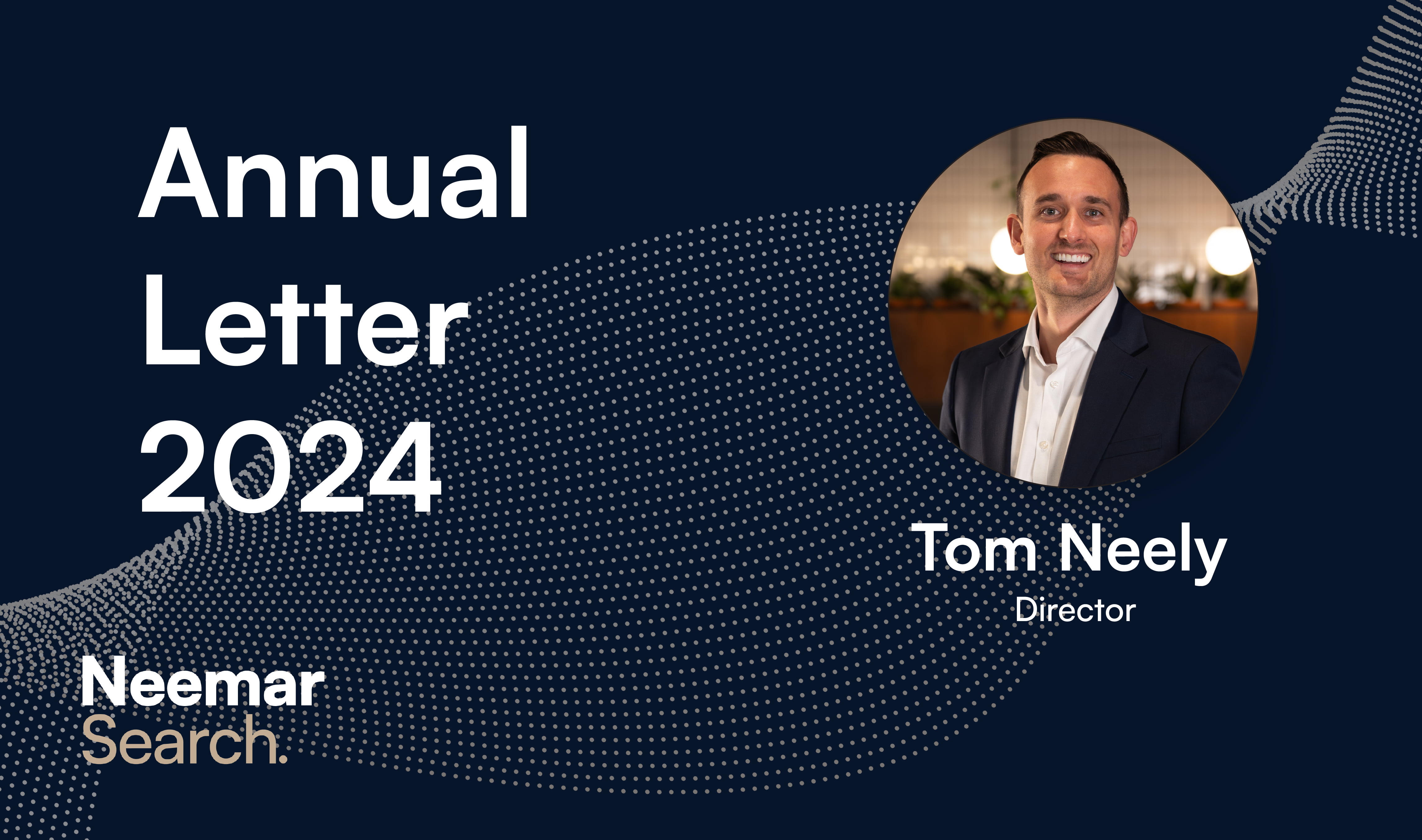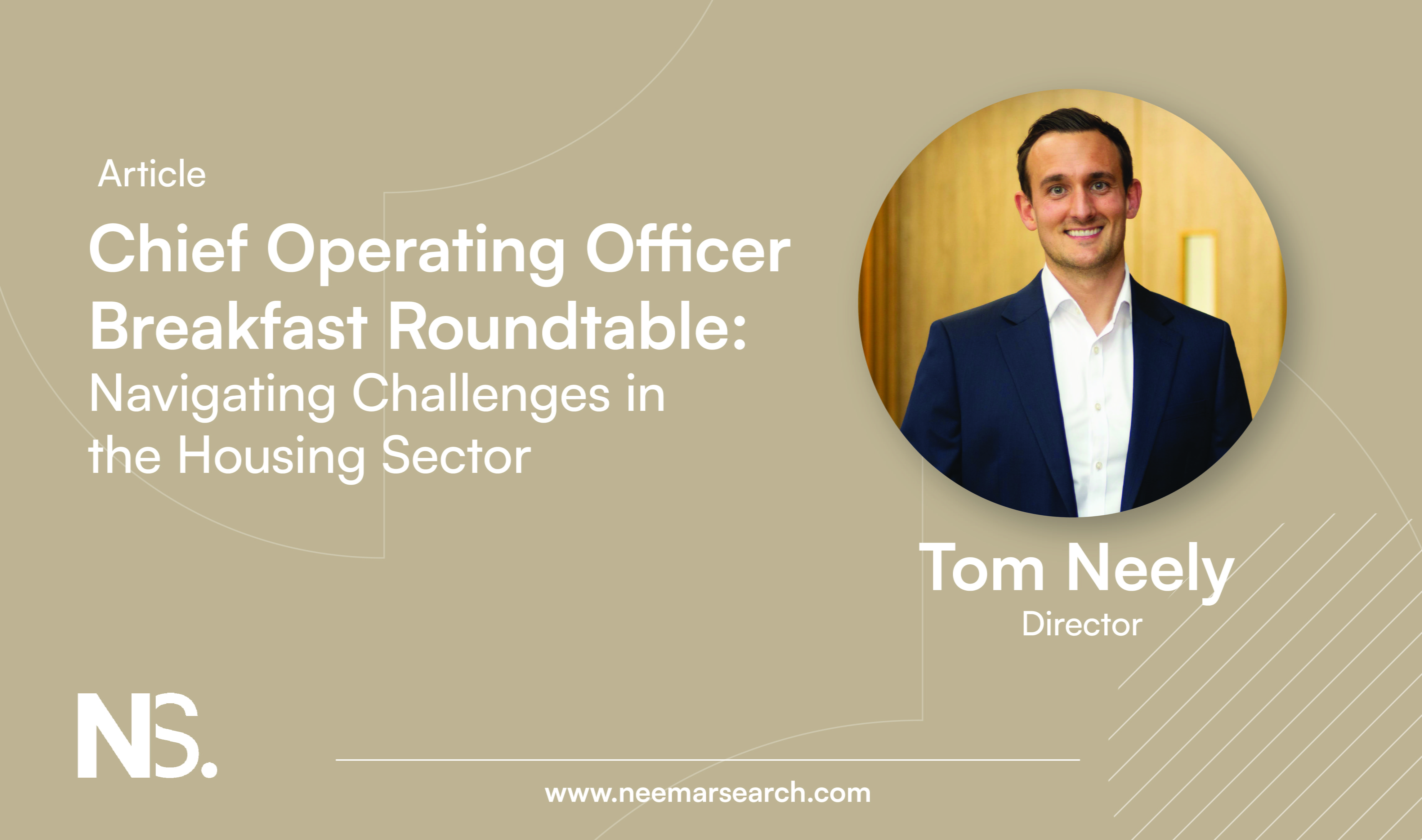
Chief Operating Officer Breakfast Roundtable: Navigating Challenges in the Housing Sector
11 Sept, 202410 Mins
Chief Operating Officer Breakfast Roundtable: Navigating Challenges in the Housing Sector
This week, as part of our NS Community, we hosted a group of Chief Operating Officers for a roundtable discussion at the Housing Community Summit.
The Executives shared insights, best practices, and concerns about the evolving landscape of the sector. The discussion covered a wide range of topics, from economic challenges and regulatory changes, to using data and analytics to drive improvements in service delivery whilst also debating new technologies and AI implementation.
Navigating Economic Challenges and Regulatory Changes
The housing sector is currently grappling with significant economic pressures and an evolving regulatory landscape. COOs at the roundtable shared their perspectives on these challenges and discussed potential strategies for addressing them.
CPI + 1 Rent Increase Impact
The discussion opened with a focus on strategies for managing the CPI + 1 rent increase without a rent convergence plan. This issue is particularly pressing given the current economic climate and the financial pressures faced by many tenants.
COOs expressed serious concerns about striking the right balance between the need for increased revenue to maintain and improve housing stock, and the affordability challenges faced by their tenants. The participants acknowledged the delicate situation they find themselves in, needing to generate additional revenue to maintain properties and provide quality services, whilst also being acutely aware of the financial struggles many of their tenants are currently facing. This dilemma was likened to walking a tightrope, highlighting the precarious balance housing associations must maintain in the current economic climate.
The COOs agreed that careful financial planning and forecasting would be crucial to understanding the full impact of different rent increase scenarios. They also emphasised the importance of exploring opportunities for efficiency savings in other areas of operations, which could potentially offset the need for maximum rent increases. Enhanced support services for tenants who may struggle with increased rents, including benefits advice and budgeting support, were seen as essential. Additionally, the group discussed the possibility of considering a phased approach to rent increases where feasible, aiming to minimise the immediate impact on tenants. One COO shared an innovative approach their organisation was considering, involving a flexible rent model. This model would tie increases not just to CPI, but also to local wage growth data. While acknowledged as complex to implement, it was suggested that such an approach could help ensure rents remain affordable in the long term.
Adapting to Emerging Consumer Regulation
A significant portion of the conversation revolved around the evolving regulatory landscape, particularly in relation to consumer regulation. The discussion highlighted the sector's need to proactively adapt to these changes while maintaining operational efficiency.
Governance challenges were another significant concern, with participants expressing worry that the level of detail expected by regulators could potentially make board positions less attractive. This led to a robust discussion about the need for a more balanced approach to governance, ensuring boards remain strategic rather than becoming overly operational. The growth of board packs to hundreds of pages was cited as a particular challenge, making it increasingly difficult for board members to digest all the information while maintaining a strategic overview. Suggestions for addressing this included developing more effective ways of presenting information to boards, such as dashboard and exception-based reporting, providing more comprehensive training and support for board members, and engaging with the regulator to discuss concerns about the level of detail required and its potential impact on governance.
Participants also emphasised the importance of a clear organisational narrative when dealing with regulators, including having a well-defined plan for addressing identified issues and demonstrating a commitment to continuous improvement. One approach shared involved developing a 'golden thread' - a clear narrative running from strategic objectives through operational plans to day-to-day activities, allowing organisations to demonstrate how everything ties back to their core purpose and values during regulatory visits. The increasing importance of demonstrating how customer feedback is incorporated into service delivery and strategic decision-making was extensively discussed. Organisations shared various approaches to enhancing customer voice, including establishing customer scrutiny panels with real power to influence decisions, implementing 'you said, we did' feedback loops, and including customer representatives in board meetings and decision-making processes. Many COOs found that involving customers more deeply in decision-making processes not only satisfied regulatory requirements but also led to better, more informed decisions, creating a win-win situation for their organisations.
Enhancing Customer Experience through Data-Driven Innovation
The roundtable participants unanimously agreed that improving customer experience is crucial for the sector's future success. They shared various innovative approaches their organisations are taking to enhance service delivery through better use of data and customer engagement.
Customer Engagement in Service Transformation
Several innovative approaches to customer engagement were discussed, highlighting the sector's move towards more collaborative and customer-centric service design.
Some organisations have implemented sophisticated customer segmentation to tailor services more effectively, moving beyond basic demographic segmentation to look at behavioural and attitudinal factors. This approach has allowed for the creation of more nuanced, personalised services. The segmentation models consider factors such as digital engagement levels, payment behaviours, property maintenance history, and community involvement. This approach has been particularly effective in improving engagement with vulnerable customers, allowing organisations to proactively offer support services based on behavioural indicators, often before the customer even realises they need help.
Another innovative approach discussed was a programme to identify and reach out to "silent customers" - those who haven't had contact with the organisation in over a year. The outreach programme has uncovered numerous cases where early intervention has prevented more serious issues from developing.
The programme involves data analysis to identify customers with no recent contact, a tiered approach to outreach starting with digital communications and escalating to phone calls and home visits if necessary, and training for staff to sensitively handle these proactive contacts. This shift from a reactive to a proactive model has yielded positive results in terms of customer satisfaction and early issue resolution, fundamentally changing the organisation's approach to customer service.
Gathering and Utilising Customer Data
Participants shared various approaches to data collection and utilisation, highlighting both the opportunities and challenges in this area. One organisation showcased their use of predictive analytics, having developed a model to predict complaint likelihood with 99% accuracy, enabling proactive intervention. This model was created by analysing historical complaint data in combination with other data points such as repair histories, survey responses, and even weather data. This approach allows the organisation to identify potential issues before they escalate into formal complaints. However, the COO acknowledged that the real challenge lies in ensuring they have the capacity to act on these insights, emphasising that predicting a complaint is only valuable if steps can be taken to prevent it.
The discussion also touched on digital inclusivity, with participants recognising that digital services can benefit many customers, including those with vulnerabilities. It was noted that 89% of customers have smartphones, a statistic that challenges previous assumptions about digital exclusion. Some COOs expressed surprise at the uptake of digital services among older tenants, finding that many prefer the convenience of online services for tasks like reporting repairs or checking accounts, rather than making phone calls during office hours. However, participants also stressed the importance of maintaining multiple channels for customer interaction, emphasising that while digital services should be prioritised, they should not be the only option available. There was a clear consensus that organisations need to ensure that customers who can't or don't want to use digital services are not left behind.
COOs also discussed the challenges associated with managing the increased workload resulting from more data-driven insights. They emphasised the need for robust processes to effectively act on the data collected. One participant aptly described the situation as "drowning in data but starving for insight," highlighting that the real challenge lies not just in collecting data, but in turning it into actionable intelligence. To address these challenges, participants discussed several strategies. These included investing in data analytics skills within the organisation, developing clear processes for acting on data insights, and ensuring that data governance structures are robust and compliant with regulations like GDPR. The overall sentiment was that while data offers immense potential for improving services and customer experience, organisations need to be strategic and well-prepared to fully leverage these opportunities.
Innovative Housing Solutions
New Technologies
Several technological solutions were highlighted as ways to improve operational efficiency. AI-powered software was discussed as a means to enhance administrative tasks, particularly in areas such as meeting transcription and action item tracking. One organisation shared their experience with an AI tool that not only transcribes meetings but also identifies action items and automatically assigns them to team members, significantly reducing time spent on post-meeting administration.
Call centre optimisation was another area where technology has made a significant impact. An organisation reported dramatic reductions in call waiting times and abandoned calls by using data analytics to analyse call patterns and adjust staffing accordingly. This approach moved away from a one-size-fits-all staffing model to using predictive analytics for real-time staffing adjustments, resulting in a substantial decrease in average wait times.
Challenges in Digital Implementation
COOs shared some of the challenges they've faced in implementing new technologies. Integration issues were cited as a common challenge, with organisations finding that new systems sometimes struggle to work seamlessly with existing infrastructure. This often results in unexpected time and resource expenditure to resolve compatibility issues.
Staff adoption was another significant challenge discussed. Participants emphasised the need for comprehensive training and change management to ensure staff effectively use new technologies. It was noted that the cultural shift required often goes beyond simply training staff to use new software, extending to changing how staff think about their roles.
Balancing automation with maintaining a personal touch in service delivery was also highlighted as a challenge. Participants stressed the importance of using technology to enhance, rather than replace, human interaction, recognising that customers still value personal contact, especially for complex or sensitive issues.
Flexible Working and Technology
The discussion touched on how technology enables new working models. COOs shared experiences of implementing flexible and remote working arrangements for staff, enabled by digital tools. The rapid adaptation to remote working during the pandemic was noted, with organisations now looking at how to maintain this flexibility long-term while balancing the benefits of remote work with the need for in-person collaboration.
In terms of performance management, a new approach to job allocation for maintenance staff was shared. This system, enabled by technology, allows for more flexibility and better performance tracking. Operatives are given a set number of jobs per week, with the option to take on additional jobs for extra pay once their initial allocation is completed. This approach has reportedly improved both efficiency and job satisfaction.
In conclusion, the roundtable provided a rich and detailed discussion of the challenges and opportunities facing housing associations. While economic pressures and regulatory changes pose significant challenges, COOs demonstrated a commitment to innovation in customer service, data utilisation, and technological adoption to meet these challenges head-on.
If you are interested in joining our community groups or want to understand more about the event, please do contact Tom Neely for more information.


